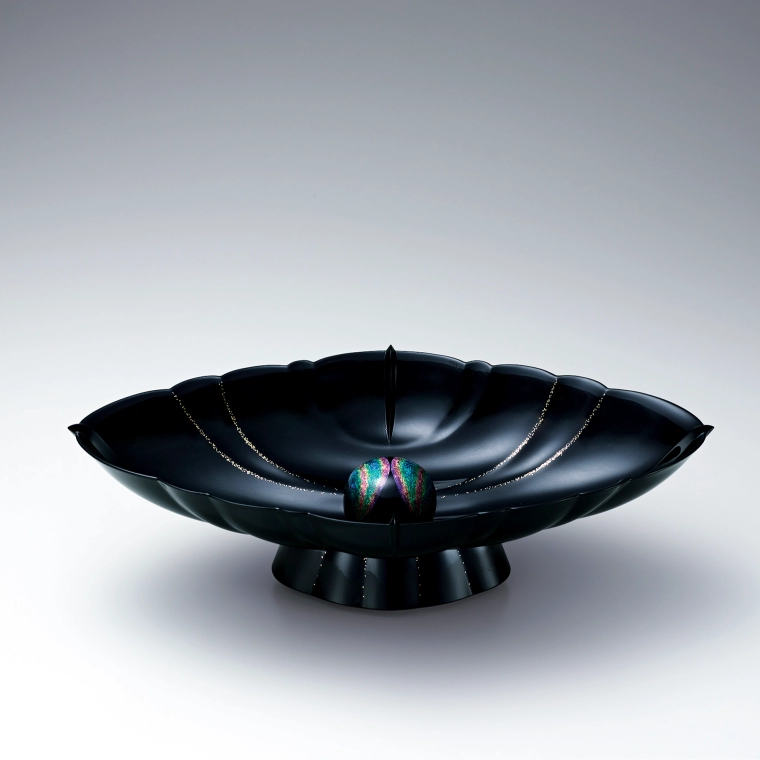Kanshitsu Incense Burner with Design in Aogai and Makie
H 12.3 x W 42.9 x D 24.1 cm,Year.2018Yoshiaki Taguchi
1958 -- Lacquerware
- Price Range Please Inquire
- Awards at Japan Kōgei Assoc. Exhibitions : 3
Description
-
CategoryLacquerware
-
DimensionsH 12.3 x W 42.9 x D 24.1 cm
-
Year presented2018
-
RarityUnique
Techniques Used
Dry lacquer
For works of dry lacquer (kanshitsu), first a clay form is created and plaster is used to take a mold of the form. Next, repeated layers of hemp cloth and lacquer are applied to the mold until they are built up to the desired thickness. Finally, the mold is removed and additional coats of lacquer are applied to finish the piece. The hemp fibers are strengthened when the lacquer bonds with them, making dry lacquer an excellent technique for creating sturdy forms with a significant degree of freedom.
Maki-e
Maki-e (literally “sprinkled pictures”) is a representative lacquerware technique that originated in Japan around 1,200 years ago. Maki-e is done by painting lacquer motifs on the surface of a piece using a fine brush and then sprinkling gold powder onto the lacquer before it hardens, producing luxurious decorations.
Selected exhibitions
- The 65th Japan Traditional Kōgei Exhibition (2018)
- Selected

